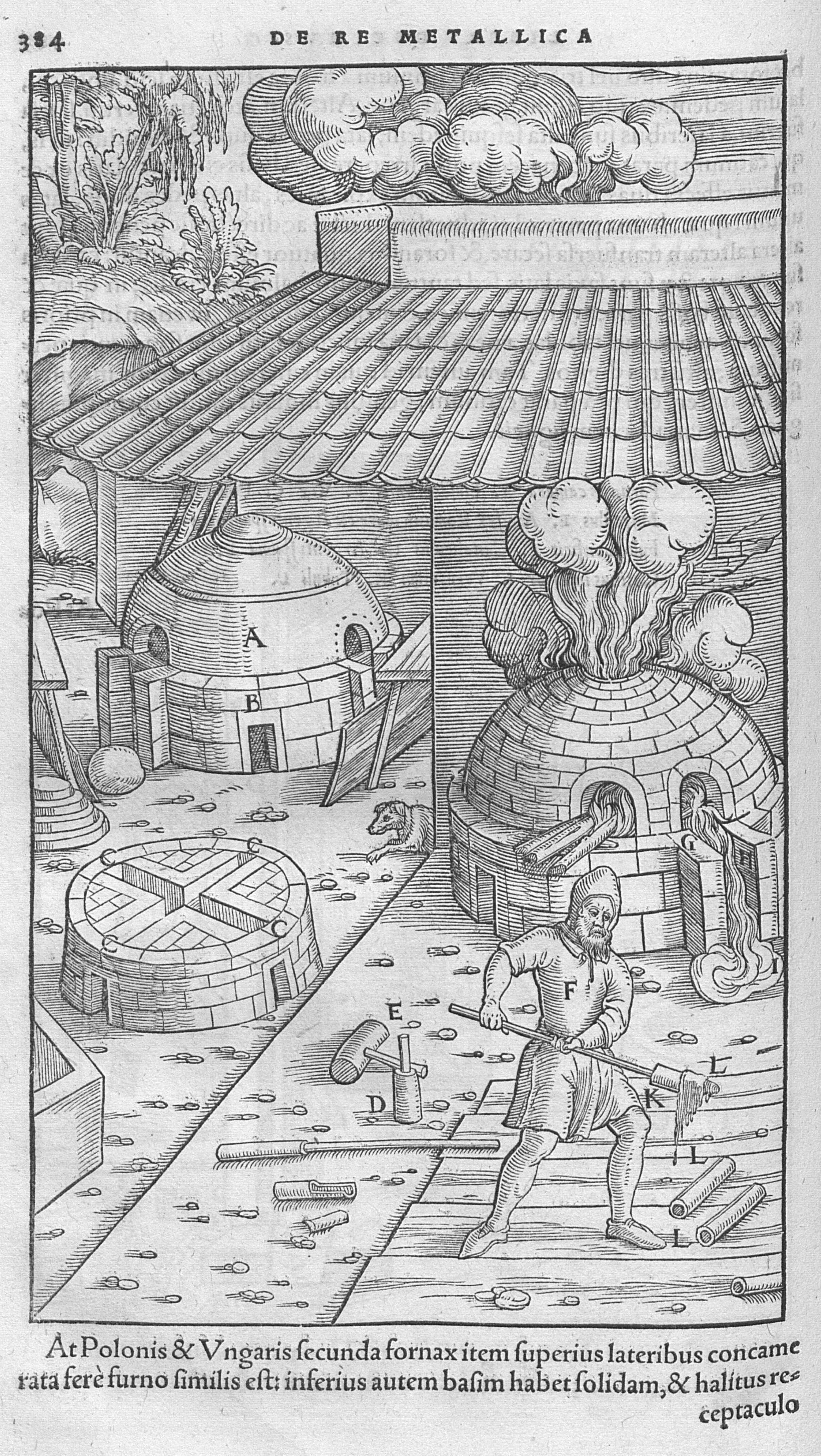A—CHAMBER OF THE FURNACE. B—ITS BED. C—PASSAGES. D—RAMMER. E—MALLET. F—ARTIFICER MAKING TUBES FROM LITHARGE ACCORDING TO THE ROMAN METHOD. G—CHANNEL. H—LITHARGE. I—LOWER CRUCIBLE OR HEARTH. K—STICK. L—TUBES.
Georgius Agricola (latinized version of his German surname Bauer, meaning “farmer’) was a German scholar and scientist (1494- 1555). He is best known for his book De Re Metallica (On metallurgy) published posthumous in 1556. The book deals with chemistry as well as mining technology, which the author knew from his experience as doctor in the mining district of Chemnitz in Saxony, the most advanced mining center in Europe at the time. The text often cites the ancient encyclopedic author Pliny but mainly advocates an experimental approach to knowledge, exercising a strong influence on Francis Bacon, one of the father of the modern scientific method.
The technical processes are illustrated with a great number of woodcuts showing every conceivable process to extract ores from the ground and metal from the ore. The image here comes from book X, dedicated to technics for parting silver from gold by using acids. It shows a furnace used for cupellation, namely the refining process where ores or alloyed metals are treated under high temperatures and controlled operations to separate noble metals, like gold and silver, from base metals present in the ore. This furnace has two side apertures, of which the first at the front for the flowing out of the litharge (lead monoxide); the second is at the left and serves to put firewood into the furnace.
Sources- http://www.ucmp.berkeley.edu/history/agricola.html
- https://en.wikipedia.org/wiki/De_re_metallica
- http://www.gutenberg.org/ebooks/38015 (Hoover’s English translation)
- Ludovico Geymonat (ed.) Storia del pensiero filosofico e scientifico. Milano, Garzanti, 1970-1972, vol. 2 pp. 95-96.


